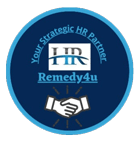The Art of Task Delegation!!
Amit, a dynamic founder of a growing logistics company, approached me for help as his HR consultant and business coach. After years of running every aspect of the business—from managing operations to client handling—Amit realized he couldn’t scale the company while managing every detail. He needed a strategy to free himself from daily tasks and focus on long-term goals.
My first suggestion was Delegate the workload to trusted employees.
At first, Amit was hesitant but agreed to give it a shot. He assigned critical tasks like client communication, employee scheduling, and supply chain coordination to different department heads. This gave Amit more time to network, plan, and innovate.
Now The Another Problem !!
A few months later, Amit called me again, but this time with a complaint:
“Instead of growth, I’m losing clients. My team isn’t delivering, and now I’m stuck fixing their mistakes.”
Upon examining the situation, the issue became clear: Amit had delegated tasks but not effectively.
His team wasn’t equipped with the right resources, authority, or clarity to complete their responsibilities properly.
The absence of clear timelines (TATs) or measurable outcomes made the situation worse.
For instance, Amit’s client services manager was responsible for handling customer queries, but without clear guidelines, they missed several follow-ups.
The operations head struggled with vendor negotiations because they lacked the authority to make decisions, leading to delays.
The company’s marketing efforts were faltering because tasks were delegated without specific targets or goals.
Now The Solution offered !!
After understanding the root of the problem, I walked Amit through a more structured delegation process:
- Delegate to the Right People
I advised Amit to assign tasks based on employee strengths. For instance, the operations head had great analytical skills, but not much experience in negotiation. So, a more experienced employee with the necessary skills was brought in to lead vendor negotiations. - Clear Communication & Goals
Every task required a clearly defined goal. We mapped out expectations for each role—whether it was improving client response time, reducing operational delays, or improving marketing outreach. Specific, measurable goals were communicated to the team. For instance, the client services team was given a 48-hour response time window to address client queries. - Provide Authority
I recommended Amit give decision-making authority to his department heads to make independent decisions. The operations team, for example, now had a clear budget and permission to negotiate with vendors. This empowered them to take immediate action instead of waiting for approvals. - Set Turnaround Times (TATs)
Timeframes for task completion were added. For example, marketing campaigns needed to be rolled out within two weeks, while monthly client check-ins were mandatory for the client services team. - Monitor & Evaluate
Finally, I suggested Amit regularly monitor the team’s progress without micromanaging. We set up weekly meetings to review KPIs, discuss challenges, and make adjustments. For instance, if the marketing team didn’t meet their engagement goals, they reviewed what went wrong and improved for the next campaign.
Outcome of Strategic Task Delegation.
Within a few months, Amit saw a marked improvement. Client satisfaction rates improved as queries were handled within the set TAT. Vendor negotiations were smoother, and operational delays decreased, leading to a 20% improvement in process efficiency. Amit now had the space to focus on expanding his business, explore new revenue streams, and build strategic partnerships.
He realized that delegation isn’t just about handing over tasks—it’s about empowering the right people with clear goals, giving them the authority they need, and ensuring consistent evaluation.
Key Learnings of Task Delegation & Buisness Growth
- Delegate Strategically: Choose the right person for the right task, matching skills with responsibilities.
- Communicate Clearly: Make sure employees know their goals, expectations, and the impact of their tasks.
- Give Authority: Empower your team with the decision-making power they need to execute effectively.
- Set Clear TATs: Defined timelines for task completion ensure accountability.
- Evaluate Regularly: Constant feedback and review processes help address challenges early and avoid major setbacks.
This structured approach transformed Amit’s business operations and allowed him to focus on scaling his company, rather than constantly fixing day-to-day issues.


Comments